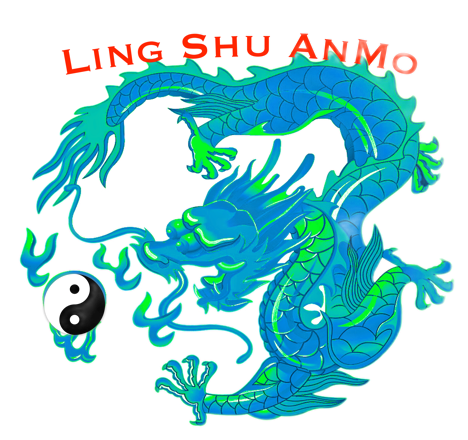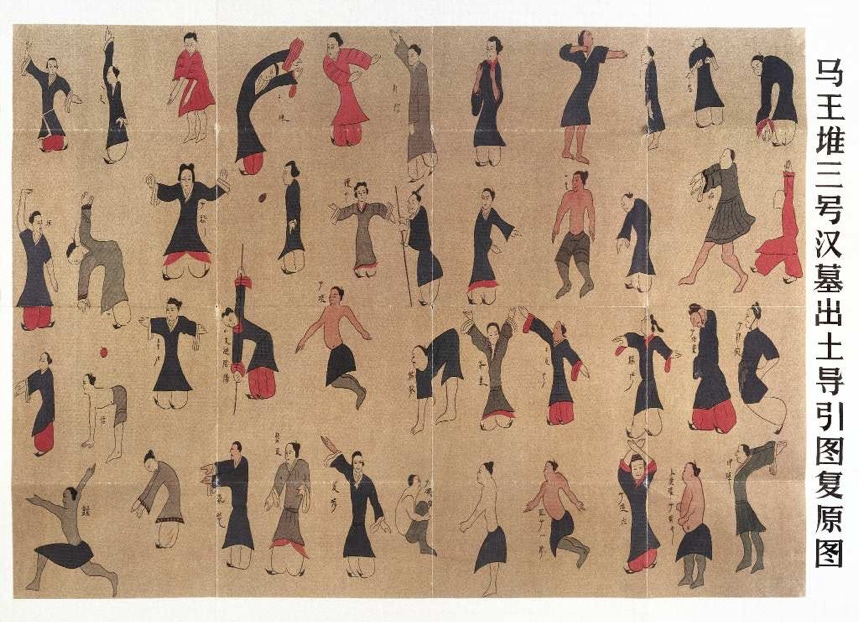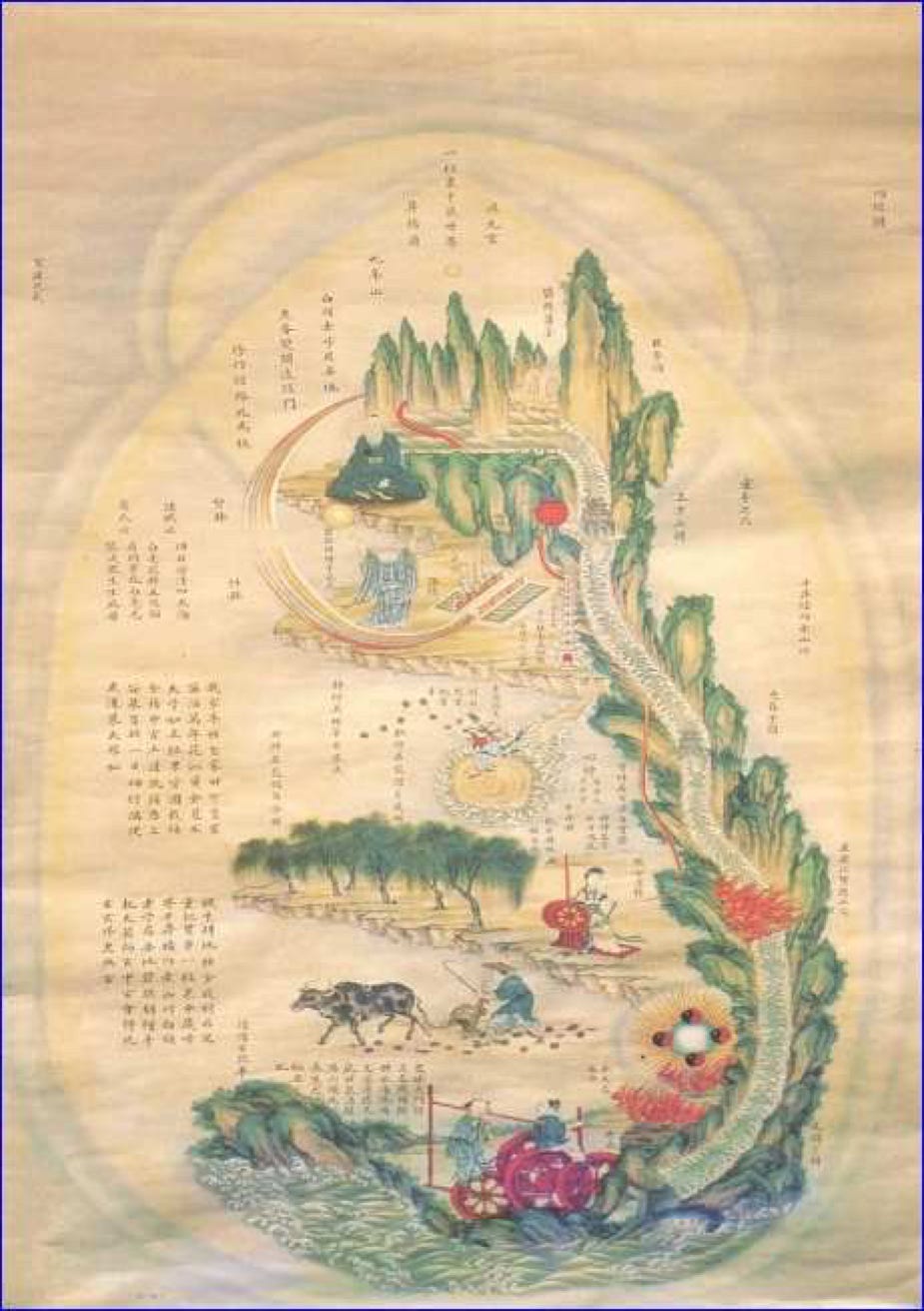
YuanYi QuanFa
Traditional Chinese Boxing


YangShen Dao
Nourishing Life - The Daoist Path to Health

The Dao Yin Tu 300BC
YuanYi Dao Yin
Daoist Yoga The Cultivation of Vitality Energy and Spirit
Internal Alchemy - Tantra
YuanYi Dao Yin - Daoist Yoga
Prevention Better Than Cure
Strong, Flexible and Healthy - the body we all want DaoYin actually translates as "guiding and leading", but this term is just a short hand for "Medical Gymnastics".
You may think Daoist Yoga is new. While it is quite new to the west, its history goes back over two thousand years. The diagram shown to the right, known as the DaoYin Tu dates back to 300BC and shows DaoYin was already well established at this time and not a sign of Lycra!
The aim of YuanYi DaoYin is to cultivate the three aspects of our existence; Vitality, Energy and Spirit (the three treasures - San Bao).
Vitality: Dao Yin functions at different levels, initially the focus is on the more mundane aspects of physical health; strength and flexibility, in so doing practitioners were following the age old wisdom of prevention rather than cure.
The simple aim is to develop a relaxed, strong and flexible body and a calm, clear and focused mind. The postures although stretching should never be forced or painful, pain creates tension which is self defeating. It has been shown to be of great benefit in achieving and maintaining general health.
Two thousand years before the creation of Pilates and the concepts of core body strength entered the mainstream, DaoYin was already addressing these issues. In DaoYin nothing is pushed or painful. If you've done other Yoga you'll know that that is not always the case.
Energy: Correct mental focus during the physical practice starts to move the practitioner towards a more inward energetic level of training, this is where some strong parallels with Tantra can be found.
DaoYin is also of great benefit to any Martial Artist, The physical rigour of Martial Practice needs balance. DaoYin helps your body to relax and some of its more dynamic aspects strengthen the body, improve posture, increase power and reduce the likelihood of injury. You may have heard of a style of Yoga called Yin Yoga, although presented as a ‘traditional’ style of Indian Yoga, the use of the word ‘Yin’ a Chinese word (Yin / Yang) gives a clue to its real origins. Yin Yoga however omits the Yang aspect (strength) of training.
A specific type of YuanYi Dao Yin is known as Nei Gong, it is often referred to as 'Internal Strength'. I teach Nei Gong as a part of the Wudang (Wu style) Tai Chi lineage. It strengthens the body in a very specific way that is indispensable for gaining maximum benefit from Tai Chi as a martial art.
If Dao Yin is considered to be active (Yang) self therapy, AnMo traditional Chinese bodywork is the passive (Yin) flip side. Yo can tread a little about AnMo here.
Meditation ~ Spirit
Clear, Focused and Relaxed - the mind we all want.
Meditation is carried out as an aspect of DaoYin, if your mind is anxious or hyper active, no amount of stretching will bring true relaxation. While DapYin develops the Vitality and Energy aspects of our existence, meditation is the cornerstone of nurturing the Spirit aspect.
All three aspects together is known as Internal Alchemy.
Some of the basic meditation techniques have recently become popular in the media, it is currently being referred to as "Mindfulness".
This is not a new type of meditation, but rather a focus on one particular aspect of meditation that has been used for centuries. Most practitioners find that meditation is more effective and comfortable if it is done after a short DaoYin session. After a prolonged session of sitting a follow up DaoYin session is a great way to invigorate the body. The problem most of us face of course is finding sufficient time. When time is short a quicker physical preparation is carried out before meditation. This practice is called Ba Duanjin (Eight Step Brocade).
Meditation methods come in many forms, but on the whole they all have the same aim; a clear awareness of one's own mental and physical processes and through that the ability to control anxiety and stress.
You can read a little more about meditation here.
Private On-Line training can be arranged from £45. per 60 minute session.
If you’d like to discuss please email me to arrange a conversation.

The NeiJing Tu - The Inner Landscape